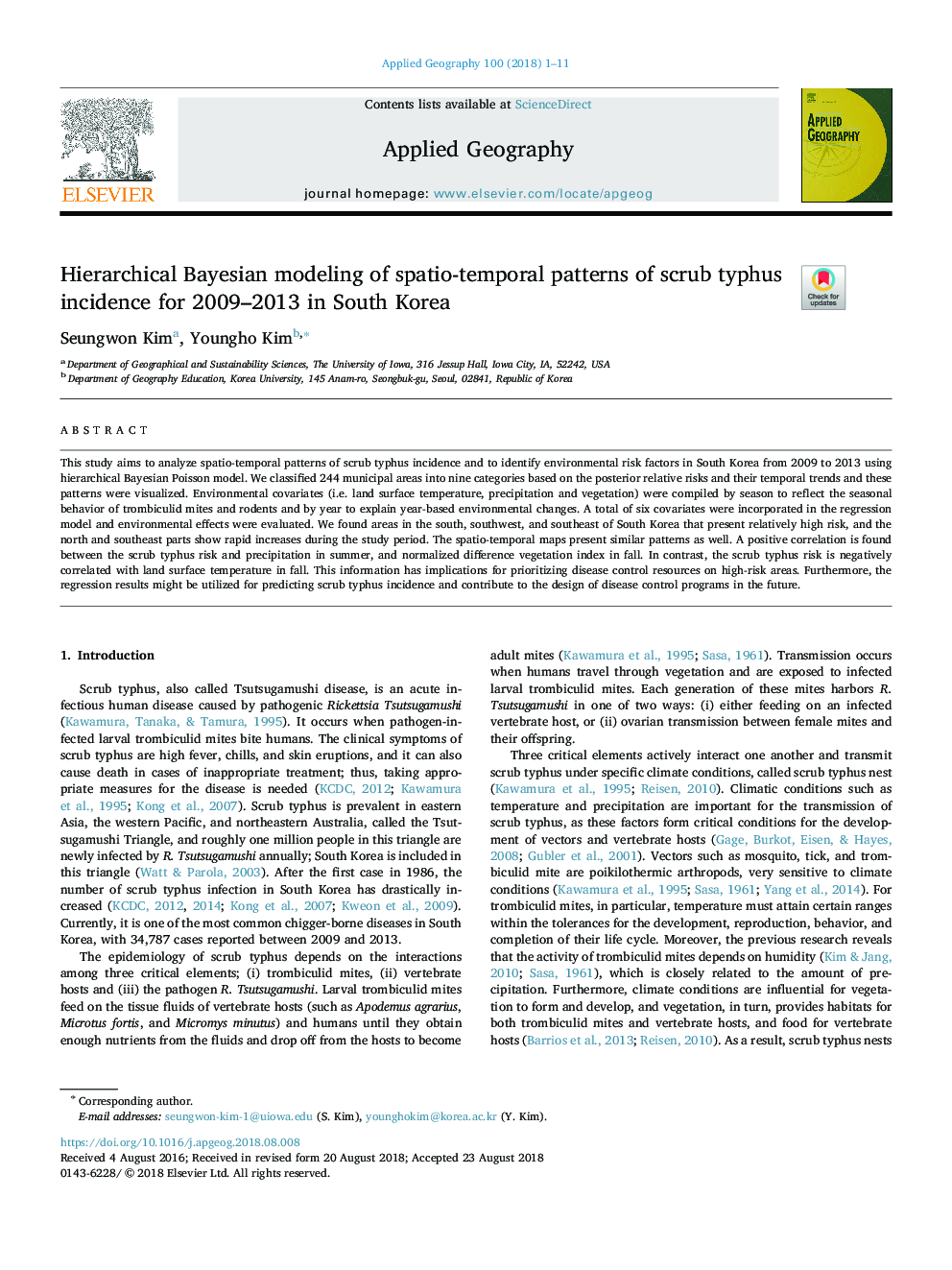| Article ID | Journal | Published Year | Pages | File Type |
|---|---|---|---|---|
| 10150027 | Applied Geography | 2018 | 11 Pages |
Abstract
This study aims to analyze spatio-temporal patterns of scrub typhus incidence and to identify environmental risk factors in South Korea from 2009 to 2013 using hierarchical Bayesian Poisson model. We classified 244 municipal areas into nine categories based on the posterior relative risks and their temporal trends and these patterns were visualized. Environmental covariates (i.e. land surface temperature, precipitation and vegetation) were compiled by season to reflect the seasonal behavior of trombiculid mites and rodents and by year to explain year-based environmental changes. A total of six covariates were incorporated in the regression model and environmental effects were evaluated. We found areas in the south, southwest, and southeast of South Korea that present relatively high risk, and the north and southeast parts show rapid increases during the study period. The spatio-temporal maps present similar patterns as well. A positive correlation is found between the scrub typhus risk and precipitation in summer, and normalized difference vegetation index in fall. In contrast, the scrub typhus risk is negatively correlated with land surface temperature in fall. This information has implications for prioritizing disease control resources on high-risk areas. Furthermore, the regression results might be utilized for predicting scrub typhus incidence and contribute to the design of disease control programs in the future.
Related Topics
Life Sciences
Agricultural and Biological Sciences
Forestry
Authors
Seungwon Kim, Youngho Kim,
